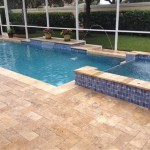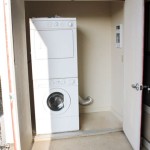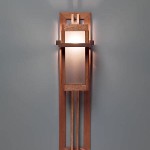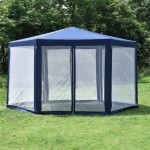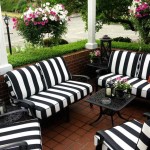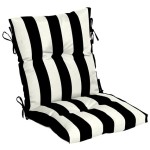Outdoor White Ceiling Fan With Light: A Comprehensive Guide
The integration of comfort and illumination in outdoor living spaces has become increasingly desirable, leading to the popularity of outdoor white ceiling fans with lights. These fixtures offer a combination of air circulation and ambient lighting, enhancing the usability and aesthetic appeal of patios, porches, and other covered outdoor areas. The selection and installation of such a fan require careful consideration of various factors, including design, materials, functionality, and safety.
An outdoor ceiling fan is specifically engineered to withstand the elements. Unlike indoor ceiling fans, outdoor models are built with materials that resist moisture, rust, and UV degradation. The "white" finish provides a clean and versatile aesthetic that complements a wide range of architectural styles. The incorporated light fixture adds a practical element, extending the usability of the outdoor space into the evening hours. This article explores the key considerations for choosing and maintaining an outdoor white ceiling fan with light, ensuring both performance and longevity.
Key Point 1: Understanding the Unique Requirements of Outdoor Ceiling Fans
Outdoor environments present challenges that necessitate specialized construction and features in ceiling fans. The primary difference between indoor and outdoor ceiling fans lies in their ability to withstand moisture. Outdoor fans are typically rated as either "damp-rated" or "wet-rated."
Damp-rated fans are suitable for covered outdoor spaces, such as screened porches or patios with roofs, where they are protected from direct rain and snow. These fans are designed to resist moisture and humidity but should not be directly exposed to the elements.
Wet-rated fans, on the other hand, are designed for direct exposure to rain, snow, and other forms of precipitation. These fans are typically constructed with sealed motors, stainless steel hardware, and UV-resistant blades to prevent corrosion and degradation. The choice between a damp-rated and wet-rated fan depends entirely on the specific location and level of exposure to the elements.
The white finish commonly found on outdoor ceiling fans serves not only aesthetic purposes but also practical ones. White reflects sunlight, helping to keep the fan cooler and prevent discoloration from UV exposure. This is particularly important in hot climates where the fan may be exposed to intense sunlight for extended periods.
The blades of an outdoor ceiling fan are also designed to be more durable than those of indoor models. They are often made from materials such as ABS plastic, aluminum, or specially treated wood that resist moisture and warping. The blade pitch, or the angle of the blades, is also optimized for outdoor use, providing efficient air circulation even in breezy conditions.
When selecting an outdoor ceiling fan, it is crucial to verify that it meets safety standards set by organizations such as UL (Underwriters Laboratories) or ETL (Intertek). These certifications indicate that the fan has been tested and meets specific safety requirements for outdoor use. Additionally, consider the blade span of the fan, which determines the area of coverage. Larger areas will require fans with larger blade spans to effectively circulate air.
Key Point 2: Selecting the Right Features and Functionality
Beyond the basic requirements for outdoor use, several features can enhance the functionality and convenience of an outdoor white ceiling fan with light. These features include remote control operation, variable speed settings, and different lighting options.
Remote control operation allows users to adjust the fan speed and light intensity without having to physically reach the fan. This is particularly useful for fans mounted in high ceilings or hard-to-reach locations. Some remote controls also offer features such as timers and dimming capabilities.
Variable speed settings provide flexibility in controlling the airflow. Lower speeds are ideal for gentle breezes, while higher speeds are suitable for hotter days when more significant air circulation is needed. Most outdoor ceiling fans offer three or more speed settings.
The lighting component of an outdoor ceiling fan can significantly enhance the usability of the outdoor space. Options include integrated LED lights, incandescent bulbs, and halogen bulbs. LED lights are energy-efficient and long-lasting, making them a popular choice. They also come in a variety of color temperatures, allowing users to create the desired ambiance. Incandescent and halogen bulbs offer a warmer light but are less energy-efficient than LEDs.
The design of the light fixture is also an important consideration. Some fans feature enclosed light kits, which provide diffused light, while others have exposed bulbs, which offer more direct illumination. The choice depends on the specific lighting needs of the outdoor space.
In addition to these features, some outdoor ceiling fans offer smart home integration, allowing users to control the fan and light using a smartphone or voice assistant. This feature can be particularly convenient for those who have already integrated other smart home devices into their home.
Another functionality to consider is the fan's motor. Look for a motor that is energy-efficient and quiet. DC motors are generally more efficient and quieter than AC motors, although they may be more expensive.
Key Point 3: Installation and Maintenance Considerations
Proper installation is crucial for the safe and effective operation of an outdoor white ceiling fan with light. It is generally recommended to hire a qualified electrician to install the fan, especially if electrical wiring needs to be modified or added. This ensures that the fan is properly grounded and wired according to local electrical codes.
Before installation, it is important to ensure that the ceiling structure is strong enough to support the weight of the fan. Outdoor ceiling fans are typically heavier than indoor models due to their more robust construction. If the ceiling is not strong enough, it may be necessary to reinforce it with additional supports.
The height of the fan is also an important consideration. The blades should be at least 7 feet above the ground to prevent accidental contact. If the ceiling is too low, a flush-mount fan may be necessary. Flush-mount fans are mounted directly to the ceiling without a downrod, which minimizes the overall height of the fan.
Once the fan is installed, regular maintenance is essential to ensure its longevity. This includes cleaning the blades regularly to remove dust and debris. A soft cloth or brush can be used for this purpose. Avoid using harsh chemicals or abrasive cleaners, as they can damage the finish of the blades.
Periodically check the fan's hardware, including screws, bolts, and connections, to ensure that they are tight. Loose hardware can cause the fan to wobble or make noise. If any hardware is loose or damaged, it should be replaced immediately.
For fans with integrated lights, replace the bulbs as needed. When replacing bulbs, be sure to use the correct type and wattage as specified by the fan manufacturer. Overloading the light fixture with too much wattage can damage the fan's electrical components.
In coastal areas or other environments with high salt content in the air, it may be necessary to apply a protective coating to the fan's metal parts to prevent corrosion. This can be done using a commercially available rust-inhibiting spray.
During periods of inactivity, such as during the winter months, it is advisable to cover the fan to protect it from the elements. A fan cover can help to prevent dust and moisture from accumulating on the fan's components.
By following these installation and maintenance guidelines, users can ensure that their outdoor white ceiling fan with light provides years of reliable performance and enjoyment.
Ultimately, the selection of an outdoor white ceiling fan with light is a multifaceted process that requires careful consideration of specific needs and environmental conditions. By understanding the unique requirements of outdoor fans, selecting the right features and functionality, and following proper installation and maintenance procedures, homeowners can enhance their outdoor living spaces with both comfort and style.

Hunter Dempsey 44 In Indoor Outdoor Fresh White Led Low Profile Ceiling Fan With Light Kit And Remote Control 50399 The Home

Home Decorators Collection Arleigh 44 In Led Outdoor White Ceiling Fan With Light Am589h Wh The

Home Decorators Collection Arleigh 44 In Led Outdoor White Ceiling Fan With Light Am589h Wh The

Harbor Breeze Echo Lake 52 In White Led Indoor Outdoor Ceiling Fan With Light 5 Blade The Fans Department At Lowes Com

Prominence Home Viretta 42 White Indoor Outdoor Ceiling Fan With 5 Blades Bowl Light Kit Pull Chains Reverse Airflow Walmart Com

Home Decorators Collection Levanto 52 In Led Indoor Outdoor White Ceiling Fan With Light 34602 The

Liberator 96 In Indoor Outdoor Pure White Ceiling Fan With Led Light Dan S City Fans Parts Accessories

52 Luna Indoor Outdoor Ceiling Fan And Light In Pure White Dan S City Fans Parts Accessories

Better Homes Gardens 52 White Outdoor Ceiling Fan Wet Rated 5 Blade Walmart Com

Home Decorators Collection Arleigh 44 In Led Outdoor White Ceiling Fan With Light Am589h Wh The
See Also

